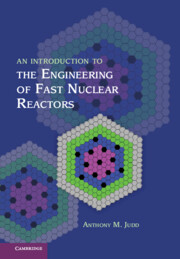4 - Coolant Circuits and Steam Plant
Published online by Cambridge University Press: 05 February 2014
Summary
Choice of Coolant
This chapter describes the engineering of the remainder of the plant in a fast reactor electricity-generating station, apart from the reactor core that is the subject of Chapter 3. The nature of the plant depends primarily on the coolant, which is the heat-transfer medium. The main considerations determining the choice of the coolant were explained in sections 3.2.3 and 3.2.4. The most important is that the high power density of a fast reactor core demands a high-density coolant and high coolant velocities. The relative advantages and disadvantages of the various possible coolants can be summarised in terms of the choices available to a reactor designer, as follows.
Liquid or Gas. Helium has the advantage that it is chemically inert and is therefore appropriate for use in a high-temperature reactor. CO2 has the advantage that there is extensive experience of its use in thermal reactors. Neither presents significant problems of corrosion or erosion. However any gas coolant has to be pressurised to make it dense enough to transport heat out of the core without unreasonably high velocities. The major consequent disadvantage is that it is then very hard to guarantee that decay heat could be removed safely in the event of an accidental loss of pressure. It would be necessary either to accept relatively low power density in the core (compared with what is possible if a liquid coolant is used) or to provide elaborate emergency cooling equipment for use in the event of a major breach of the primary coolant system. For this reason no gas-cooled power-producing fast reactor has, at the time of writing, been built and thus there is no operating experience, but that does not mean that gas coolant may not at some time in the future become attractive.
Information
- Type
- Chapter
- Information
- An Introduction to the Engineering of Fast Nuclear Reactors , pp. 192 - 238Publisher: Cambridge University PressPrint publication year: 2014
